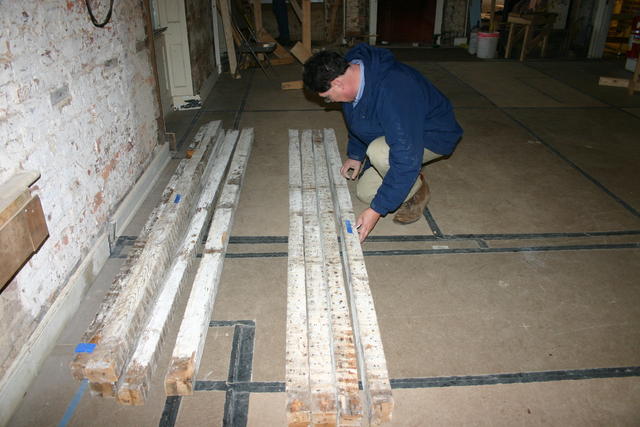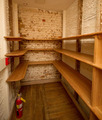
Later, when the Restoration Team analyzed the studs, they noted that they had been whitewashed and that several of the studs had a series of narrow ghosts running across one face. Similarly, when the restoration carpenters were deconstructing the partitions in the cellar, they ran across hewn and pit-sawn, whitewashed studs with similar ghosts on their faces. When the studs from the cellar were compared to the studs from the second floor, it was discovered that all of the ghosts lined up, indicating that all of the studs had supported the same wall in the Madison-period wall. Because of the size and the location of the ghosts, it was also theorized that they were most likely caused by shelves that once ran across the studs.

©The Montpelier Foundation
|
|
Architectural historian Mark Wenger inspects the ca. 1797 studs for evidence of shelving. |









